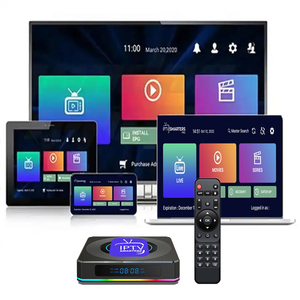Stream Anywhere, Anytime: IPTV Subscription Provider at Your Fingertips
Stream Anywhere, Anytime: IPTV Subscription Provider at Your Fingertips
Blog Article
How IPTV Functions: A Step-by-Step Guide to Web Method Tv Modern Technology
Internet Procedure Tv (IPTV) has revolutionized the way we take in television material, offering a new realm of opportunities through the power of the web. Recognizing the intricacies of just how IPTV works can clarify the technology that drives this ingenious type of media shipment. From the basic concepts of IPTV to the complex process of content distribution, each step plays a vital function in ensuring a seamless watching experience. In this overview, we will certainly uncover the hidden devices that make IPTV a remarkable combination of innovation and entertainment.
IPTV Fundamentals
In understanding IPTV fundamentals, it is critical to realize the fundamental functions of this technology in providing television content online. IPTV, which represents Web Protocol Television, makes use of Internet Protocol (IP) networks to send tv web content to individuals' gadgets. Unlike traditional approaches of relaying tv material via cable television or satellite signals, IPTV streams media via high-speed internet links.

Furthermore, IPTV permits interactive capabilities, such as video on need (VOD) and electronic program overviews (EPG), enhancing the individual experience by offering even more control and adaptability in accessing material. In general, recognizing the basics of IPTV sets the structure for discovering its advanced performances and the advantages it uses to modern television consumption.
Material Delivery Process
Effective material distribution in IPTV systems includes a well-structured process that makes sure smooth transmission of tv material over IP networks. The material shipment procedure in IPTV starts with the creation of the video clip material, which is then encoded into electronic style ideal for IP transmission. This encoded material is then firmly kept on servers referred to as media web servers. When a visitor requests specific web content, the IPTV system retrieves the asked for information from the media servers and delivers it to the visitor's device online.

Middleware Functionality
With the integration of middleware, IPTV systems gain enhanced functionality that simplifies customer interaction and content administration. Middleware works as a crucial part that bridges the gap in between the interface and the back-end facilities, facilitating seamless interaction and communication within the IPTV system. One of the vital features of middleware in IPTV is to enable tailored user experiences by providing attributes such as interactive program overviews, video-on-demand solutions, interactive advertising and marketing, and customer preferences monitoring. By centralizing these performances with middleware, company can supply a much more dynamic and tailored IPTV experience link to their customers.

Gadget Compatibility
Provided the critical role of middleware in enabling seamless interaction and web content monitoring in IPTV systems, a crucial facet to take into consideration is the compatibility of tools utilized for accessing the IPTV services. Device compatibility is important for ensuring a smooth user experience and optimal efficiency when accessing IPTV material.
In the context of IPTV, gadget compatibility refers to the capacity of a tool to successfully communicate with the IPTV service, present material properly, and support the essential methods and codecs for streaming video content over the internet. Various gadgets, such as wise Televisions, set-top boxes, mobile phones, tablets, and computer systems, might have varying levels of compatibility with IPTV services.
To make see page certain a smooth viewing experience, it is essential for customers to select tools that are compatible with the details IPTV solution they are making use of. In addition, IPTV solution carriers must offer support for a wide variety of devices to accommodate the diverse demands of their user base. By focusing on gadget compatibility, both users and solution carriers can enhance the overall IPTV experience.
Quality of Solution (QoS)
Taking into consideration the vital role of preserving a high criterion of performance and integrity in IPTV systems, making sure constant Quality of Solution (QoS) remains a basic element of the individual experience. QoS in IPTV describes the capability of the system to deliver web content with very little disturbances, high resolution, and fast packing times. To attain optimal QoS, different variables need to be dealt with. Network bandwidth is critical to support premium video clip streaming without buffering or pixelation. In addition, latency, jitter, and packet loss must be decreased to enhance the seeing experience.
Provider employ QoS systems such as website traffic prioritization, buffering, and error improvement to maintain a steady IPTV solution. By prioritizing IPTV traffic over much less time-sensitive information, providers can make certain smooth playback even throughout peak use hours. Buffering assists make up for network changes, while mistake improvement methods boost information integrity.
Continuous tracking and optimization of QoS criteria are important to adapt to transforming network problems and customer demands. Eventually, a durable QoS structure is vital for delivering a smooth and enjoyable IPTV experience to individuals.
Conclusion
In conclusion, IPTV operates through the transmission of television material over web method networks. High quality of Service plays a crucial duty in preserving the performance and reliability of IPTV services - IPTV subscription.
Report this page